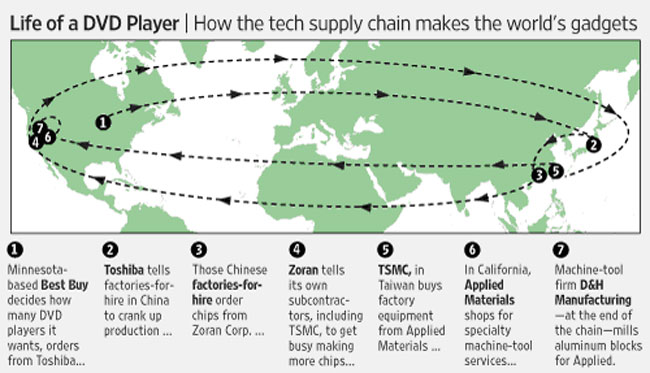We all know supply chains are increasingly global and complex, perhaps in no sector more so than in the high-tech/consumer electronics industry.
As the recession started, that complexity and a lack of demand visibility led to something like a "reverse Bullwhip Effect." It's actually the same as a regular Bullwhip Effect, in which relatively stable demand from end consumers manifests itself as much more spiky order patterns as one moves back up the supply chain. We call this case a reverse Bullwhip Effect simply because a relatively small drop in actual consumer demand, combined with a lack of visibility and great uncertainty and fear, led to dramatic drops in orders and production, which ultimately led to stock outs and lost sales. (See In a Period of Falling Demand and Supply Chain Complexity, Lack of Visibility May have Exacerbated Economic Downturn.)

Source: Wall Street Journal
As shown in the graphic above, there are many connected players from retailers Best Buy's need for more DVD players through finished goods suppliers, contract manufacturers and various component and MRO suppliers. In stable times, parties can manage with a relative lack of real visibility to end demand. In this scenario, however, volatile and uncertain demand led to havoc and panic across the extended supply chain.
Agree or
disagree? What is your perspective? Let
us know your thoughts at the Feedback button
below.
|